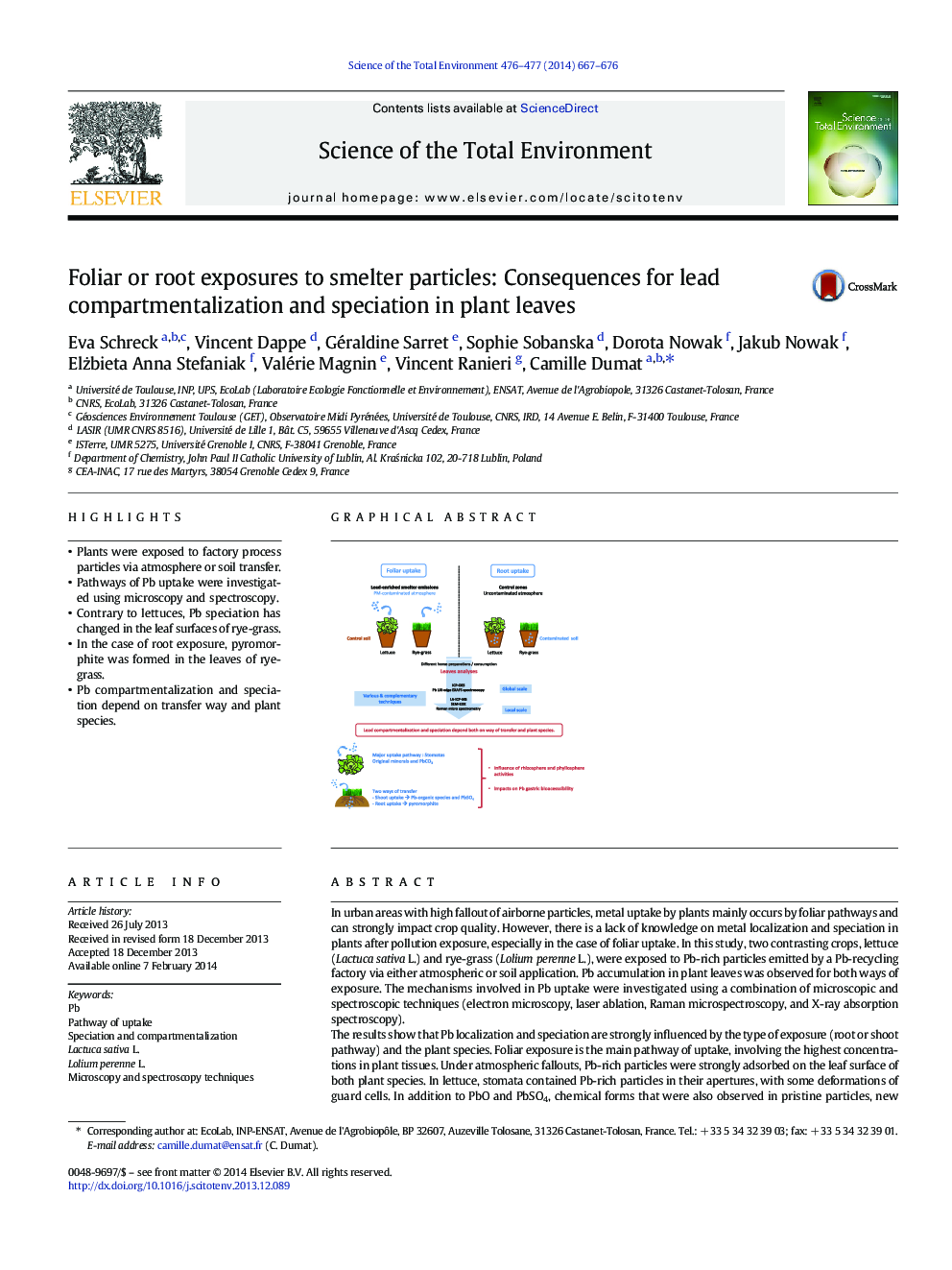| کد مقاله | کد نشریه | سال انتشار | مقاله انگلیسی | نسخه تمام متن |
|---|---|---|---|---|
| 4428581 | 1619789 | 2014 | 10 صفحه PDF | دانلود رایگان |
• Plants were exposed to factory process particles via atmosphere or soil transfer.
• Pathways of Pb uptake were investigated using microscopy and spectroscopy.
• Contrary to lettuces, Pb speciation has changed in the leaf surfaces of rye-grass.
• In the case of root exposure, pyromorphite was formed in the leaves of rye-grass.
• Pb compartmentalization and speciation depend on transfer way and plant species.
In urban areas with high fallout of airborne particles, metal uptake by plants mainly occurs by foliar pathways and can strongly impact crop quality. However, there is a lack of knowledge on metal localization and speciation in plants after pollution exposure, especially in the case of foliar uptake. In this study, two contrasting crops, lettuce (Lactuca sativa L.) and rye-grass (Lolium perenne L.), were exposed to Pb-rich particles emitted by a Pb-recycling factory via either atmospheric or soil application. Pb accumulation in plant leaves was observed for both ways of exposure. The mechanisms involved in Pb uptake were investigated using a combination of microscopic and spectroscopic techniques (electron microscopy, laser ablation, Raman microspectroscopy, and X-ray absorption spectroscopy).The results show that Pb localization and speciation are strongly influenced by the type of exposure (root or shoot pathway) and the plant species. Foliar exposure is the main pathway of uptake, involving the highest concentrations in plant tissues. Under atmospheric fallouts, Pb-rich particles were strongly adsorbed on the leaf surface of both plant species. In lettuce, stomata contained Pb-rich particles in their apertures, with some deformations of guard cells. In addition to PbO and PbSO4, chemical forms that were also observed in pristine particles, new species were identified: organic compounds (minimum 20%) and hexagonal platy crystals of PbCO3. In rye-grass, the changes in Pb speciation were even more egregious: Pb–cell wall and Pb–organic acid complexes were the major species observed.For root exposure, identified here as a minor pathway of Pb transfer compared to foliar uptake, another secondary species, pyromorphite, was identified in rye-grass leaves. Finally, combining bulk and spatially resolved spectroscopic techniques permitted both the overall speciation and the minor but possibly highly reactive lead species to be determined in order to better assess the health risks involved.
Figure optionsDownload as PowerPoint slide
Journal: Science of The Total Environment - Volumes 476–477, 1 April 2014, Pages 667–676
